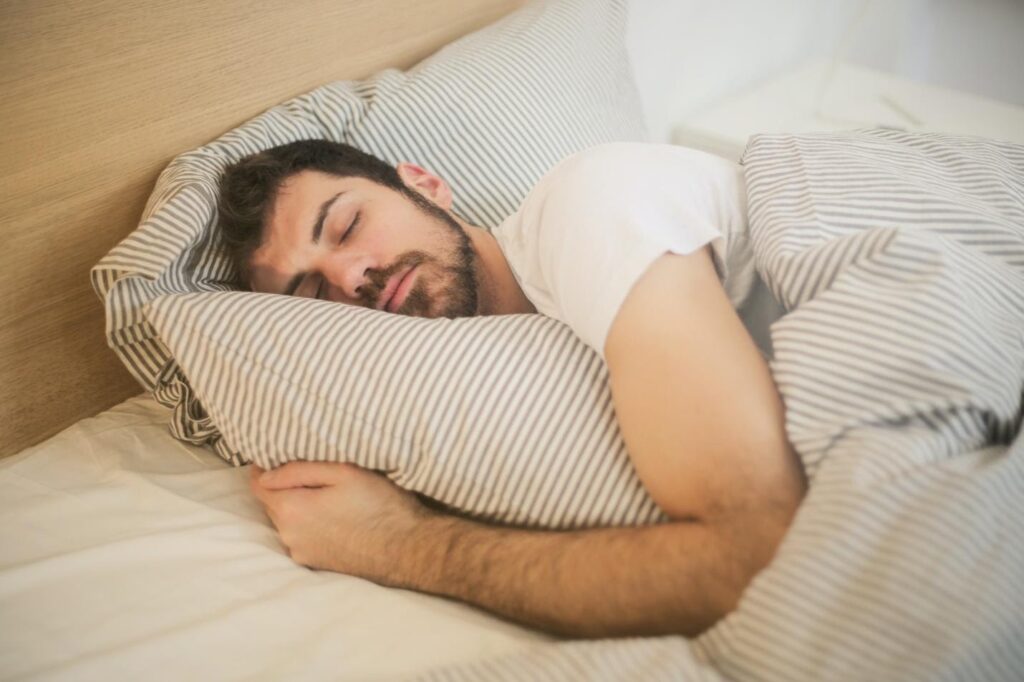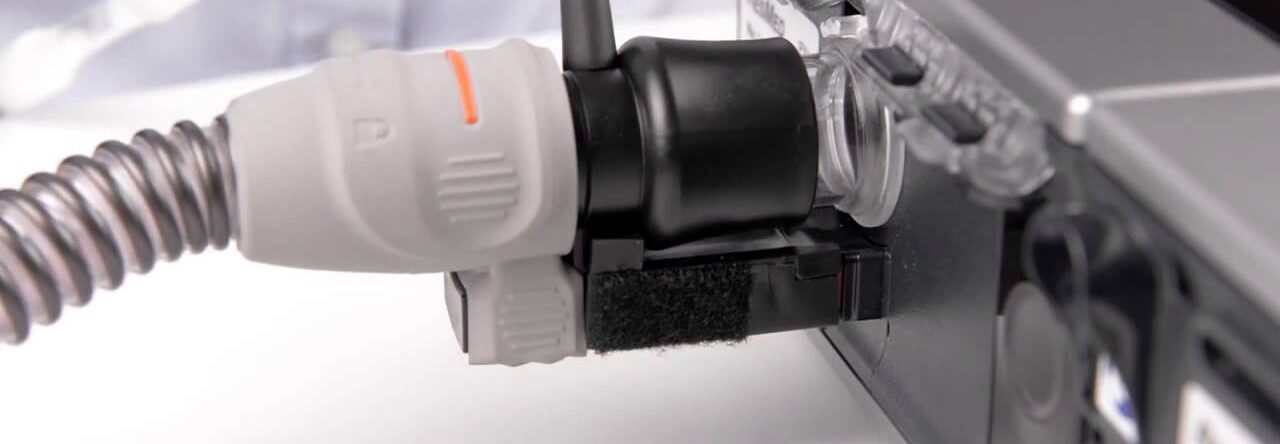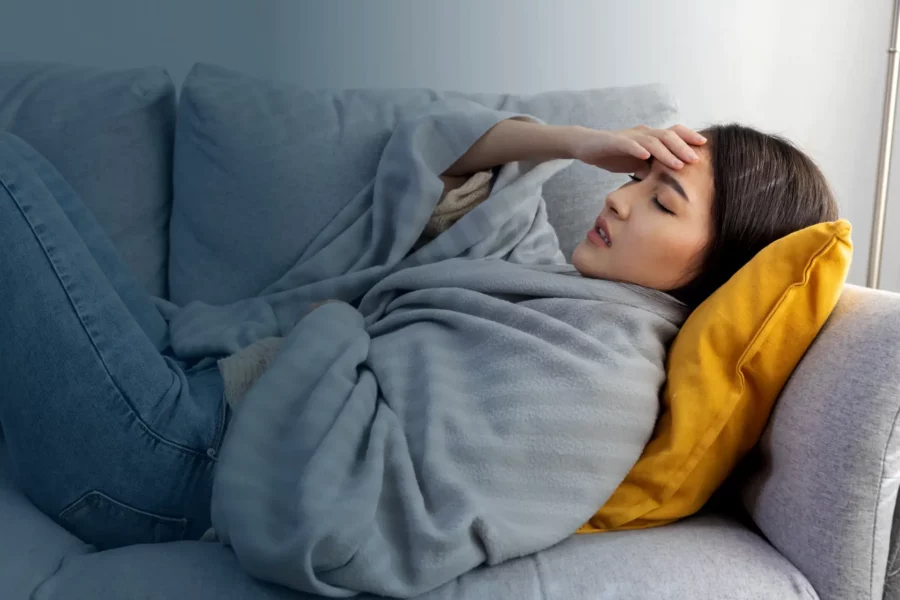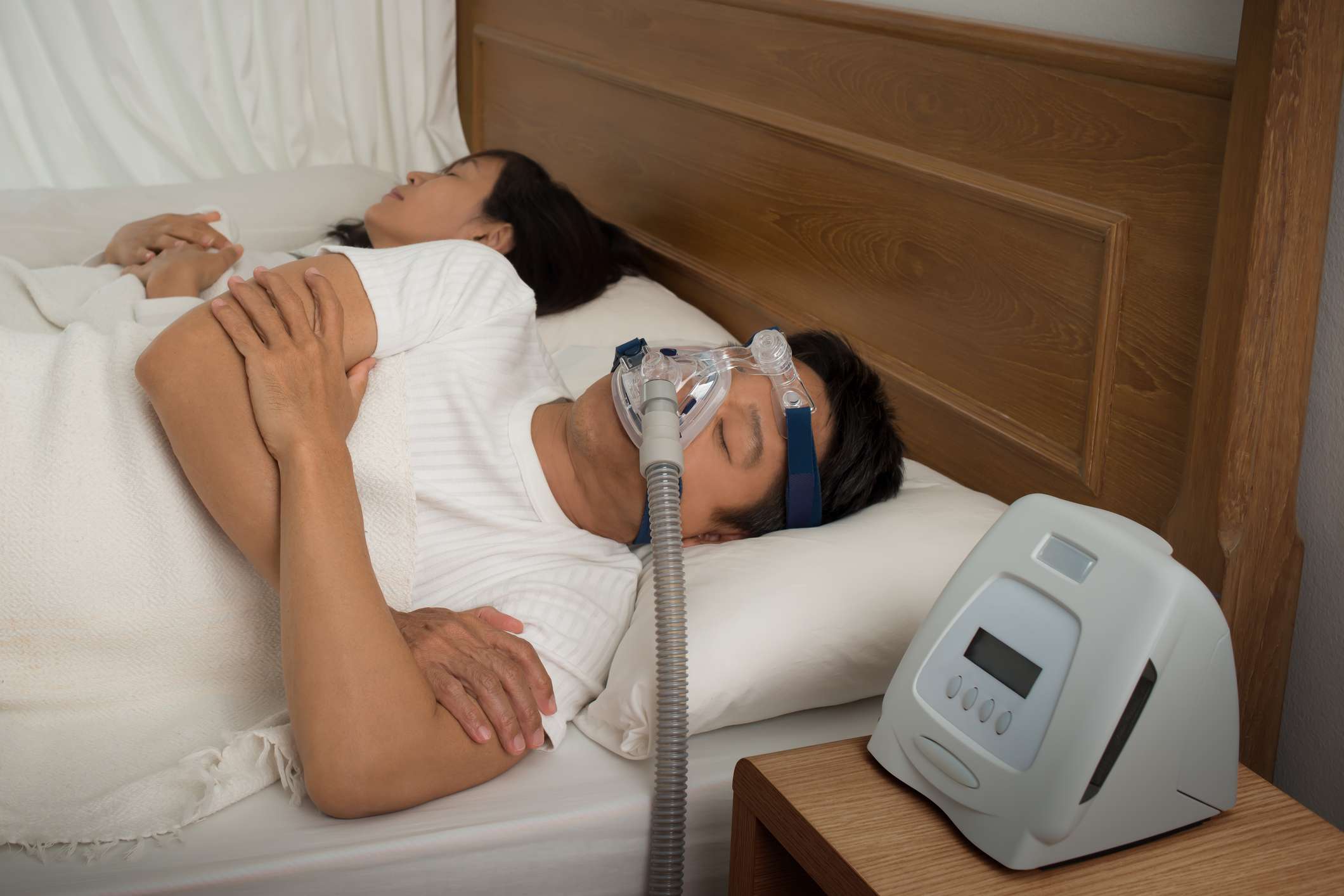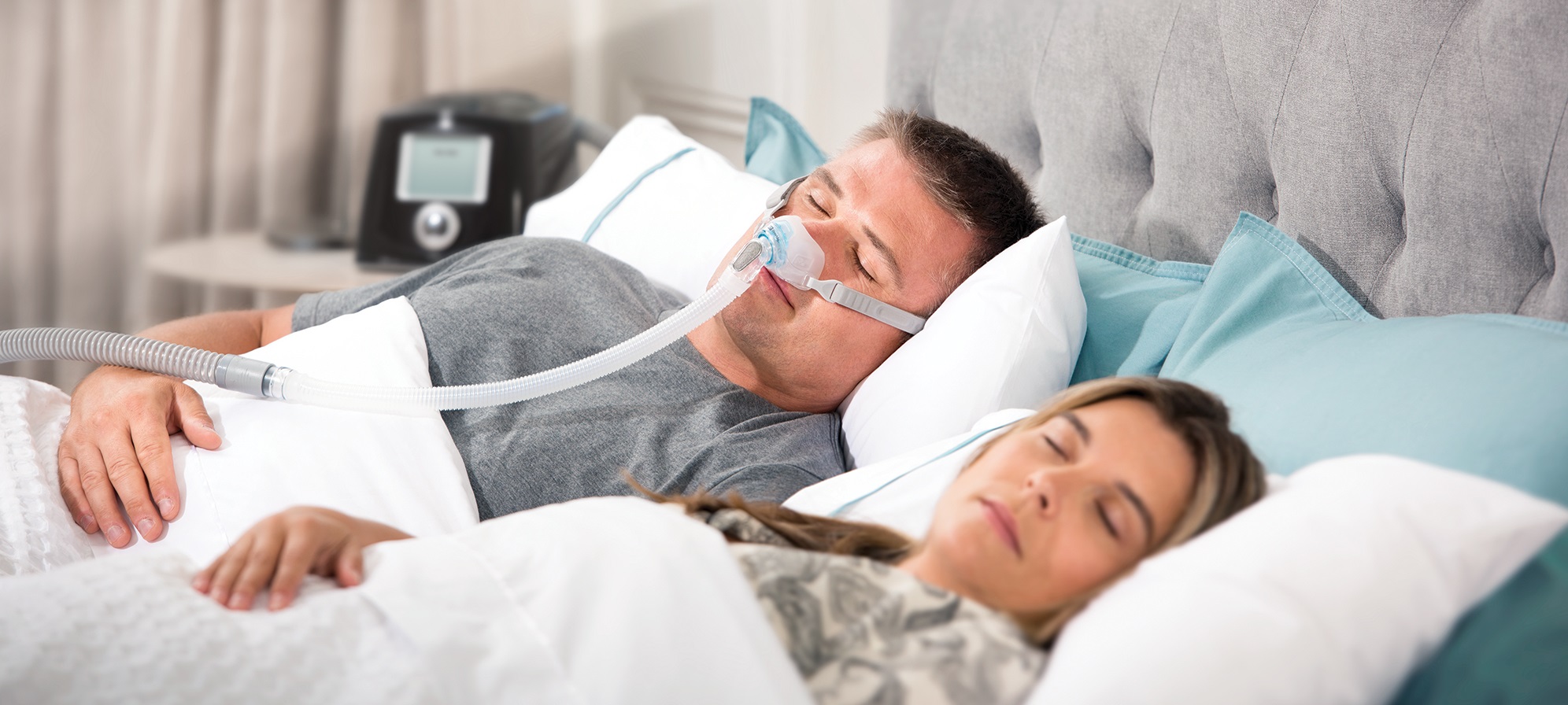When someone has sleep apnea, they frequently cease breathing for small periods of time while they are sleeping. The sleep apnea syndrome is characterized by inadequate oxygen intake. They will cough as a result, usually waking them up.
Many times, when their breathing has stopped, people are unaware of it and continue to believe that their sleep cycle is normal. The sounds made by snoring and sleep apnea are identical.
Sleep apnea may cause a number of additional health issues in addition to making you feel more worn out in the morning. If left untreated, this sleep issue may, among other things, cause mental health issues, impair immune system performance, contribute to memory loss, and increase the risk of heart failure.
The most popular treatments for this illness are breathing apparatus, medication, and surgery. However, changing certain parts of your way of life and caring for your home may improve the quality of your life and the quantity of sleep you obtain.
All of the products that have been approved by Healthline to cure snoring and sleep apnea are available in our sleep shop.
Lifestyle treatments for sleep apnea
One of the most common treatments for sleep apnea is the use of a CPAP mask while you sleep. Even if it produces the intended outcomes, some people find this method to be unpleasant. It’s likely that certain natural treatments might provide the same benefits. The following six alternative treatments all promise to alleviate sleep apnea symptoms.
1. Make an effort to reach and maintain a healthy weight
Patients with sleep apnea are often advised by medical practitioners to lose weight. Obesity, especially in the upper body, increases the risk of having restricted nasal passages and blocked airways. These difficulties might lead you to suddenly stop breathing or to stop breathing for a long time when you are sleeping.
Maintaining a healthy weight may help keep your airways open and decrease the signs and symptoms of sleep apnea. In obese individuals, even a little weight reduction may eliminate the need for upper airway surgery and continuous positive airway pressure (CPAP) therapy, according to research from Trusted Source.
Some people’s sleep apnea may be cured by losing weight, according to research. However, if you wind up gaining the weight back, the issue can resurface.
2. Try yoga
If you exercise consistently, your heart will become stronger, your energy level will increase, and your sleep apnea will get better. Your respiratory system may get stronger and the flow of oxygen may be stimulated by yoga practice.
Sleep apnea is associated with a decrease in the quantity of oxygen that is saturated in your blood. Yoga is a sequence of moves that emphasize slow, deep breathing. This might help your blood contain more oxygen. Yoga reduces the likelihood that you may have difficulties falling or staying asleep as a result.
3. Consider switching up your sleeping posture.
One of the best methods to treat the signs of sleep apnea and obtain a better night’s sleep is to change the way you sleep. According to a study done in 2006, posture is a factor in more than half of cases of obstructive sleep apnea.
Research has shown that lying on your back while you sleep, sometimes referred to as the supine position, may significantly exacerbate symptoms. Adults who sleep on their side may sometimes find that their breathing returns to normal.
On the other hand, a 2002 study by a reputable source revealed that children with sleep apnea sleep more soundly on their backs.
After learning about your sleep apnea symptoms and your body alignment during the conversation, your doctor will go through your treatment options.
4. Employ a humidifier.
The quantity of moisture in the air may be increased via humidifiers. When exposed to dry air, the body and the respiratory system are both prone to irritation. Your airways may widen when you use a humidifier, which helps lessen congestion and make it simpler for you to breathe clearly.
It could be advantageous to utilize essential oils like lavender, peppermint, or eucalyptus while using a humidifier. These three essential oils are well known for their relaxing and anti-inflammatory properties.
Make careful to adhere to the manufacturer’s instructions while cleaning your humidifier. They might potentially harbor mold and bacteria.
A humidifier may be purchased online from a shop.
5. Avoid alcohol and cigarette smoke.
Changes to your lifestyle may improve your health and enable you to establish more peaceful sleeping patterns. You should consider about quitting smoking and consuming less alcohol if you want to reduce the dangers connected to sleep apnea.
When you consume alcohol, the throat muscles that control your breathing become more relaxed. This might lead to snoring and a disrupted sleep cycle, among other things. Additionally, it can enflame your airways, which would limit how much air can flow through your body.
Smoking may cause inflammation and swelling in the airways in a similar way to consuming alcohol. Your sleep apnea and snoring may become worse as a result of this.
According to a study from 2012, smoking increases the likelihood of getting sleep apnea. The study’s results suggest that those with sleep apnea may also have a hereditary propensity for smoking. Therefore, treating sleep apnea may be beneficial in quitting smoking.
6. Make use of oral devices
For those with sleep apnea, oral appliances that move your jaw or tongue to keep your airway open while you sleep may be beneficial.
The two main categories of dental orthotics are tongue stabilizing devices and mandibular advancement devices. These devices work by moving either your lower jaw or your tongue forward to lessen the obstruction at the back of your throat.
These products range from those that can be bought over-the-counter (OTC) and are reasonably priced to those that require be fitted by a dentist and are much more expensive.
The Australian Academy of Dental Sleep Medicine has endorsed oral appliance therapy as a successful sleep apnea treatment option.
A 2015 proposal suggests oral appliances for those with sleep apnea who cannot tolerate using a CPAP machine. This suggestion supports custom-fit appliances over over-the-counter options since the former allow for jaw position adjustment, which enhances sleep quality.
Can a natural remedy for sleep apnea be used?
Although the phrase “naturally” is quite vague, if we interpret it to mean “without surgery, drugs, or a specialized breathing equipment,” then the answer is yes.
In the past, your main alternatives for treating sleep apnea would have been surgery, medicine, or CPAP treatment. This is no longer the case. That shift represents a big step for many individuals.
The aforementioned conventional solutions may be useful, but they can also be difficult and cumbersome. These characteristics have caused many people to forego treatment and make vain attempts to just tolerate their sleep apnea, which has had a detrimental effect on their health.
These people will be able to sleep better and have a greater quality of life if their sleep apnea can be treated organically without intrusive operations, negative drug side effects, or cumbersome breathing equipment.
Treatment for sleep apnea without a mask may be beneficial.
It should be noted that not all cases of sleep apnea may be cured without the use of a CPAP machine, medications, or surgery.
One of those choices could be the greatest one for your long-term health if you have a really severe case; in such instance, I would certainly advise emphasizing health above comfort and convenience.
But many patients with sleep apnea find that maskless, CPAP-free therapies work well. If you or someone you know is interested in treating sleep apnea without utilizing the conventional choices, the alternatives are well worth looking into. For example, therapy with a dental device may be equally as successful as CPAP for up to 87% of patients.
Positional Therapy
Positional treatment may help you find relief if lying on your back, sometimes referred to as the “supine position,” causes your airways to constrict or collapse and interferes with your normal breathing pattern.
Positional treatment often involves shifting you into a side sleeping position by placing a device around your waist or back. This keeps your airways open and keeps you from curled up in a supine posture at night.
Therapy for Weight Management
Being overweight might limit your capacity to breathe because the extra tissue and weight in the region of your neck may make your airways narrow or clogged.
The airways may stay open and clear while you’re sleeping because to weight management therapy’s ability to lessen the weight and strain on them.
Naturally, those who are overweight or obese are the only ones for whom this form of therapy works. Weight management therapy is not a course of treatment you would choose if your snoring and sleep apnea issues are brought on by the structure of your mouth, jaws, and airways.
Life Coaching
A few instances of sleep apnea, usually minor ones, may be treated by changing one’s surroundings and way of life. Usually, this entails avoiding practices and other influences that have a detrimental effect on your airways and capacity to breathe.
You may be able to treat sleep apnea, for instance, by giving up smoking, consuming less alcohol, or making sure allergens are removed from the air where you sleep.
Dental devices
Last but not least, there are dental devices that may be specially built to fit your mouth and jaws to cure sleep apnea. They are supported by a multitude of clinical research and testing and are undoubtedly the most effective at-home sleep apnea therapy option.
These kinds of dental gadgets, which are worn throughout the night, make sure that your airways stay open and unhindered while you sleep, promoting deep sleep without snoring.
As the realignment of the lips and jaws often has the additional advantage of decreasing or even eliminating the need for orthodontic treatment throughout the teenage years, this technique may be very helpful for children who suffer from sleep apnea.
Are there any sleep apnea gadgets available over-the-counter?
You could discover that a store-bought remedy, such as a posture-correcting “sleep apnea pillow,” works if you simply have very minor sleep apnea.
With these pillows, you may encourage smooth, unhindered breathing while you sleep without having to change the posture of your complete body, as in positional treatment.
However, if you have moderate to severe sleep apnea, these OTC therapies often don’t work, in my experience. If that’s the case, you’ll probably discover that therapies given by or in collaboration with a knowledgeable medical professional provide superior outcomes.
Their knowledge is essential to ensure that the modifications you’re making are successfully addressing how does sleep apnea happen and aren’t having unexpectedly negative effects on your health.
How much treatment is appropriate?
By applying various at-home remedies and changing one’s lifestyle, sleep apnea symptoms may be lessened. However, using conventional therapy is still recommended. This condition is often treated with prescription medication and, in rare circumstances, surgery.
You should first examine your choices with your primary care physician before commencing any alternative treatment. If you discover that the intensity of your symptoms has increased, get immediate medical help.
